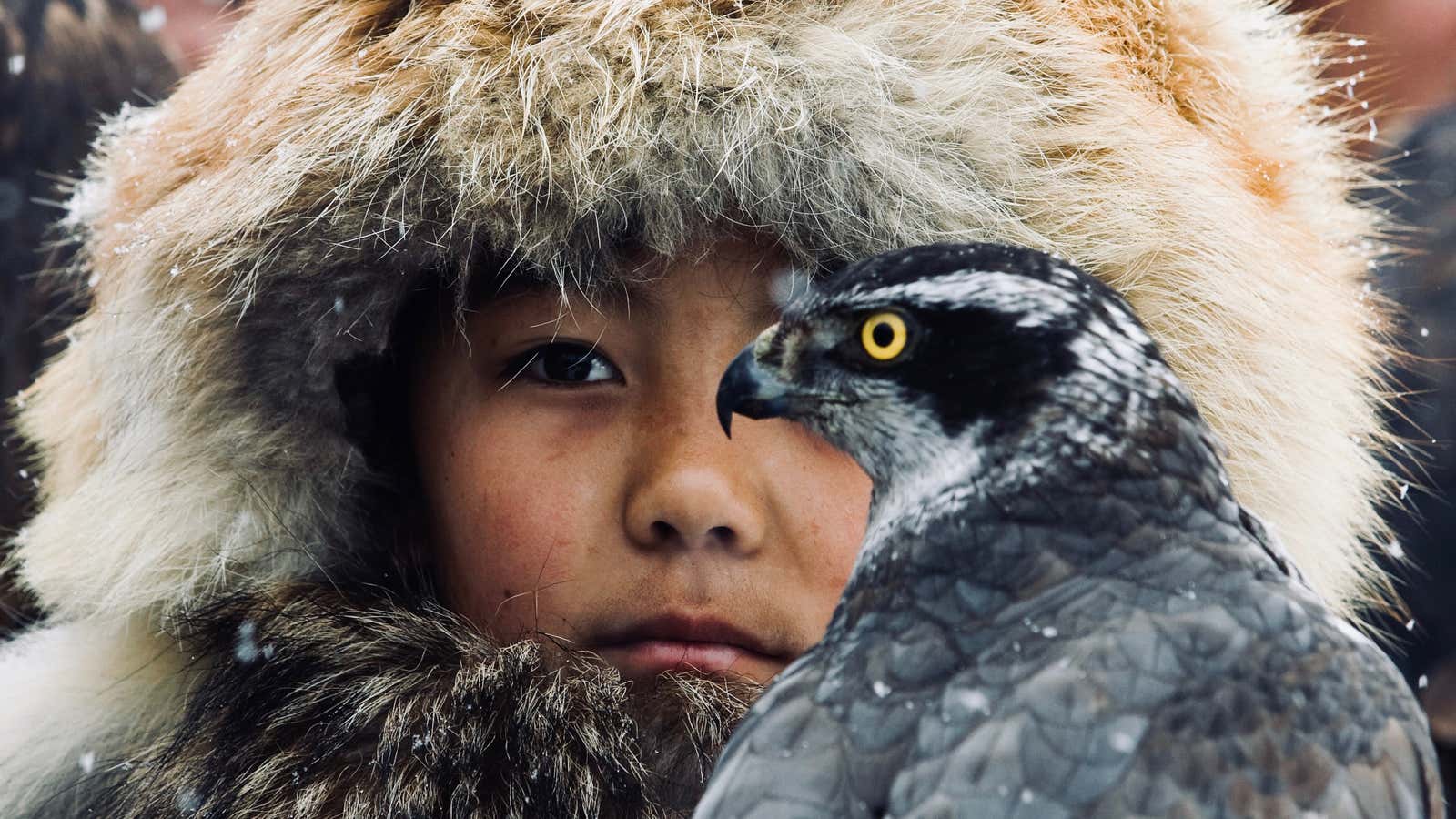If you listen closely to the sound of birds chirping, you’ll hear that they’re taking turns. The same goes for croaking frogs and dolphin whistles. Fireflies flirt in alternating flashes, called “courtship dialogues.” And monkey parents will refuse to respond to offspring if they’re interrupted.
Scientists have long observed that creatures seem to convey a wide array of information in their exchanges. Up until now, however, the research on how different species communicate has been fractured. A new study in the Philosophical Transactions of the Royal Society B examines over 50 years of work on animal exchanges on land, in the sea, and in the sky, in an attempt to “peel away the layers” that make human language so elusive.
“Language, humans’ most distinctive trait, still remains a ‘mystery’ for evolutionary theory,” the study explains. “It is underpinned by a universal infrastructure—cooperative turn-taking—which has been suggested as an ancient mechanism bridging the existing gap between the articulate human species and their inarticulate primate cousins.” In other words, we’ve long assumed that language, defined by cooperative turn-taking, is what makes us distinct from other creatures. But this may not be the case, the researchers say: “We know remarkably little about turn-taking systems of non-human animals.”
The collaboration between researchers from the Universities of York and Sheffield, the Max Planck Institute for Evolutionary Anthropology in Germany, and the Max Planck Institute for Psycholinguistics in the Netherlands, gathers data on different animals proposes a new comparative framework to discuss the “conversations” of all these living things. The goal is to gain a better understanding of how people came to have their unique linguistic abilities, and if, indeed, we even are that unique from the rest of the animal kingdom.
“We came together because we all believe strongly that these fields can benefit from each other, and we hope that this paper drives more cross talk between human and animal turn-taking research in the future,” says Sonja Vernes, from the Max Planck Institute for Psycholinguistics in a statement about the study, entitled “You talking to me?”
Like us, many creatures seem to cooperate, taking turns signaling information, with time between cries. The time in between calls or cries lends credence to the notion that animals may well be conversing. A variety of studies have attempted to make sense of distinct animals’ modes of communication, with the timing, tenor, and context of exchanges indicating what they’re likely signaling. But researchers working in distinct fields rarely communicate themselves, and haven’t put together a comprehensive understanding of animal chatter.
“Although temporal coordination in animal communication has attracted interest over several decades, no clear picture has yet emerged as to why individuals exchange signals,” the researchers say. There are some indications that modes of exchange vary between the sexes among some creatures, and that signals mean different things in distinct contexts. But no one can yet say with certainty what it means that amphibians, insects, and birds alike all seem to “sing” duets, or how that’s connected to turn-taking conversations.
The researchers propose a framework for further research on all non-human animals that focuses on four key elements characterizing human social action during conversation: Flexibility of turn-taking organization; who takes the next turn; when responses occur; what the next turn does. Looking at animal behavior in the context of human language and social behaviors could shed light on how our tongues evolved, apart from unifying animal conversation studies.
We may yet learn that the birds and the beetles are doing much more than wooing each other or signaling danger when exchanging calls and clicks. We don’t know enough about how human linguistics evolved to understand how distinct their chatter really is from our own. But these animal exchanges may be much more complex than we imagined.
